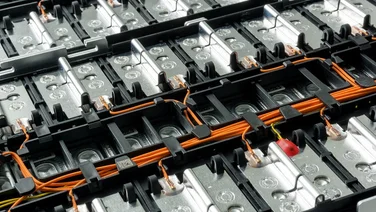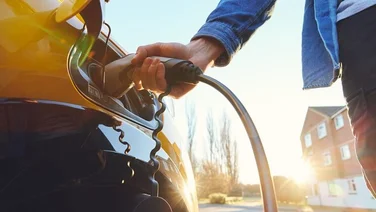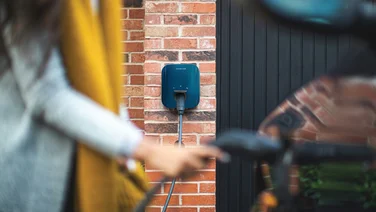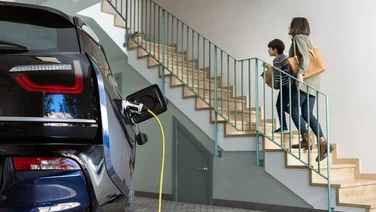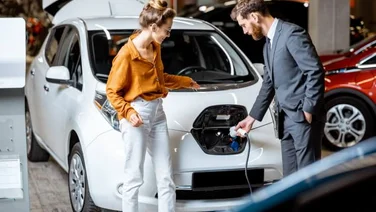- Greenhouse gas emissions from e-scooters
- What are the environmental benefits of using an e-scooter over driving and walking?
- Do e-scooters pollute more than cars?
- Is it better for the environment to use public transport or an e-scooter?
- Which e-scooter is the most eco-friendly?
- What does the future hold for electric scooter emissions?
- Private e-scooters release three times less emissions per mile than cars
- The best e-scooter needs just four hours of charge to run for 75 miles
- But cycling is more environmentally friendly than taking an e-scooter
Electric scooters are one of the most environmentally friendly modes of transport, besides bicycles, and electric vehicles. Cheaper too, especially as you don’t need to pay the cost of installing an electric charger.
But they’re subject to the same legal requirements as cars – including tax, MOT, number plates, and signalling ability – all of which makes it impossible to legally drive them in public.
However, the tide is turning. In July 2020, the government launched a 12-month trial that enables people to hire e-scooters and ride them in public. This may lead to the legalisation of private e-scooters – so before that, let’s see exactly how environmentally friendly these vehicles are.
If you’re interested in buying an electric vehicle chargepoint instead, you get quotes from expert installers by filling in this quick form.
Get free EV charging point quotes
Answer a few quick questions, and our trusted installers will send you bespoke EV charging point quotes – for free.

Greenhouse gas emissions from e-scooters
E-scooters are responsible for 202g of CO2e for every mile they’re driven, according to a 2019 study from North Carolina State University.
That may sound strange – they run on electricity, after all, and don’t release emissions while you’re driving them.
The emissions are given off during the process of gathering materials and manufacturing them, and by the vehicles responsible for their daily collection.
This figure would be reduced by 43% to just 115g per mile if privately owned e-scooters were permitted on UK roads, as people could ride them home to be charged, instead of relying on carbon-emitting vehicles to collect them.
And as long as you charge them using 100% renewable energy – which is increasingly possible – they won’t be responsible for any emissions at that point either.
For example, a Chinese company has come out with a solar scooter, an e-scooter with integrated solar panels.
What are the environmental benefits of using an e-scooter over driving and walking?
The best environmental benefit of an e-scooter is that it releases a much lower amount of emissions than a car.
Cars release 369g of CO2e per mile, which we calculated using data from Carbon Independent and NimbleFins.
This is 83% higher than e-scooters’ current 202g figure.
And if and when privately owned scooters are allowed, cars will release 320% as much CO2e per mile as e-scooters.
In certain, limited circumstances, using an e-scooter is even better for the environment than walking.
Just like any vehicle, your body needs fuel to function. If that fuel is beef, your walking will be responsible for 1,100g of CO2e per mile, according to Carbon Commentary.
However, beef emits six times more CO2e than chicken, and 40 times as much as a serving of avocado.
So if you generally consume less carbon-intensive food than beef, walking is still by far the most environmentally friendly form of transport.
Do e-scooters pollute more than cars?
E-scooters definitely don’t pollute more than cars.
Cars are currently responsible for 67.7 million tonnes of CO2e per year, according to the latest government report.
Even with the ongoing trial, e-scooters only make up a tiny fraction of road transport, so there’s no way to calculate their pollution total – but from what we know, it’ll be far lower than that of cars.
If private e-scooters were legalised, and they reached the same level of popularity that cars currently enjoy, they’d still only be responsible for 21.1 million tonnes of CO2e per year.
Is it better for the environment to use public transport or an e-scooter?
It’s better to use any of the regular forms of public transport than an e-scooter, according to government data.
As we’ve highlighted above, even a privately owned e-scooter is responsible for 115g of CO2e per passenger mile.
In comparison, a train’s figure is 25.5g per mile – more than four times lower than an e-scooter.
Buses emit 64.6g per mile, while coaches are one of the best modes of transport for the environment, letting off just 16.8g per mile.
Electric is still a better alternative to petrol or diesel in every way though, especially when it comes to cars, which was why we were surprised at one finding from our 2023 National Home Energy Survey. It revealed that 45% of Brits wouldn’t accept a free electric vehicle, which we think it because of perceptions around vehicle range and EV charger infrastructure.
How about bicycles?
Bicycles are responsible for 13g per passenger mile, according to a European Commission-funded study – and most of that is the food the cyclist has to eat.
That’s nine times less than an e-scooter.
This data proves that besides walking, cycling is the best mode of transport if you want to help the environment.
Which e-scooter is the most eco-friendly?
The Speedway 5, made by MiniMotors USA, is the most eco-friendly e-scooter around at the moment.
You only need to charge this machine for four hours to reach an incredible 75 miles of range, which means you can travel for 18.75 miles on just one hour of charge.
That figure makes the Speedway 5 unbeatable on today’s market.
The next best model is the Dualtron X, which offers 12.4 miles per hour of charge – and is also made by MiniMotors USA, which doesn’t feel like a coincidence.
The Speedway 5 recently won Electric Scooter Insider’s award for best electric scooter for under $2,500 (£1,800) – and for good reason.
What does the future hold for electric scooter emissions?
One in seven UK adults are planning on purchasing an e-bike or e-scooter, according to a 2020 survey.
This would work out to more than nine million sales, showing the increasing popularity of these modes of transport.
Josh Frisby, founder of Electric Scooter Insider, a resource that helps consumers choose the right electric scooter, told us: “Since COVID-19, we have seen the demand for electric scooters increase fourfold as consumers become reluctant to travel in the confined spaces of public transport and ride-hailing vehicles.”
He added that e-scooters were less polluting than cars – which is demonstrably true – and safer, a statement supported by the inter-governmental International Transport Forum.
The main barrier to this uptick in uptake is the current law, which bans people from using privately owned e-scooters on roads.
But in October 2020, the government’s Transport Committee recommended that privately owned models be made legal.
The committee’s chair, MP Huw Merriman, said that “e-scooters have the potential to become an exciting and ingenious way to navigate our streets and get from place to place.
“If this gets people out of the car, reducing congestion and exercising in the open air, then even better.”
And with the public increasingly looking to renewable sources of energy and transport, and the government slowly coming round to the idea of a law change, it looks like e-scooters are on their way to bigger and better things.

